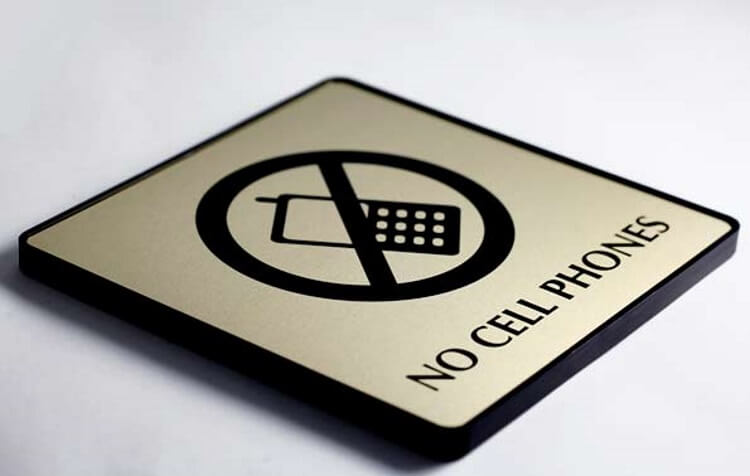Wherever you go, people are glued to their mobile devices. They almost seem hypnotized by them. This is especially true for young people.
50% of US teens have their own mobile devices. American mobile usage for those aged 18-29 is now at 100%, according to Pew Research. That’s why student electronics require firm guidelines while you’re touring.
Establishing tour rules for student electronics is a top priority, requiring active education of your tour group from the moment you start discussing behavioral expectations for the tour. Clarity is the foundation of all successful communication. And clearly-delineated tour rules help students respect their surroundings by turning off their devices.
You could be Tough Teacher and collect and then, lock mobiles up at the beginning of each day’s activities, but that’s an authoritarian response which may breed resentment. Give students the opportunity to be responsible about their electronics usage on tour and give them a life skill they’ll carry with them into maturity.
In black and white
Words are sometimes not remembered or remembered in a distorted way. That’s why putting the rules about electronics in black and white is crucial. Regardless of the age group, your words are put together to reach, this is a universal truth. But young people are professionals at “misremembering”, so put your tour rules for student electronics in black and white.
A bullet-pointed list on one page will suffice. Clear guidelines will be remembered, so make it crystal clear. Connect your electronics rules to the itinerary. This is a highly effective strategy which helps your students understand why the rules exist.
Site matters
Let’s pretend you’re taking your students to the Holocaust Museum in Washington, DC. While this sober attraction has had a ban on cell phones in place since 1993, they now have a mobile app which can be used by visitors. This was introduced to the facility in 2014.
Letting your students know this while discussing your tour rules is a perfect opportunity to tell them their devices can used at the museum, but not for selfies, texting or idle chatter.
Tell your students that their mobiles are excellent portals for learning more about the places they’re experiencing, but that they’re not to be used for trivial purposes at historic sites – particularly sites as historically significant and sensitive as the Holocaust Museum.
Outlining clear tour rules for student electronics is so much better than policing usage on site. Stating unequivocally what will and won’t be permitted gives your students a chance to display their maturity and their deference to something more important than their devices.
You’re letting them know that their electronics have a role to play in learning about what they’re seeing, but that this role has strong boundaries.
Junior Tours
Junior Tours has been taking students on stimulating educational tours for over 50 years. We’re the boutique youth travel provider that doesn’t treat you and your students like numbers. Personalized attention is what you get, when you go with Junior.
Ready to go? Contact us for a sample itinerary and quotation.

